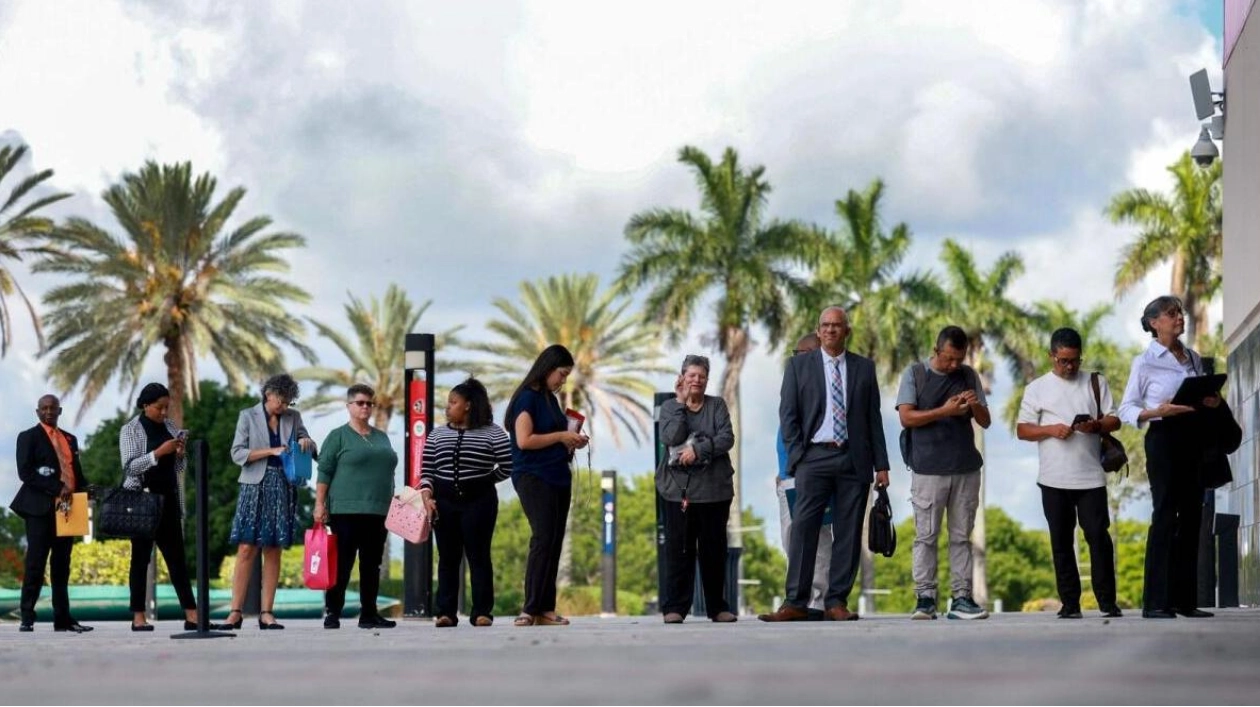A significant repricing of expectations for U.S. interest rate cuts could further fuel a robust bond market rally, sparked by deteriorating economic indicators, as investors consider the possibility that the Federal Reserve might need to ease its stringent economic policies more rapidly than previously thought to prevent a recession.
Earlier this week, investors were questioning whether the U.S. central bank had acted too slowly in adopting a less restrictive stance, especially after maintaining steady borrowing costs at its July policy meeting. However, the situation shifted dramatically towards the end of the week, as Thursday's manufacturing data and Friday's weak employment figures heightened recession fears and led to a substantial reevaluation of monetary policy for the remainder of the year.
"The increasing unemployment rate indicates that the Fed is lagging behind," commented Tony Farren, managing director at Mischler Financial Group. Traders in futures linked to the Fed's overnight policy rate are now anticipating around 120 basis points of interest rate cuts by the end of the year, nearly double the amount priced in before Wednesday's Fed meeting. Treasury yields, which typically move opposite to prices, experienced a sharp decline, with two-year yields reaching their lowest point since March of the previous year and ten-year yields hitting their lowest since December.
The 2/10 yield curve, which has been inverted for over two years, was at minus 9 basis points, nearing a positive turn for the first time since the inversion began. Historically, this curve has turned positive a few months before the onset of recessions.
Friday's data revealed a rise in the unemployment rate to 4.3%, signaling an unforeseen weakening in the labor market, which had previously demonstrated surprising strength amid the Fed's aggressive rate hikes. This increase in the jobless rate activated the Sahm rule, a reliable early indicator of recession according to analysts. The rule, designed to swiftly identify recession onset, flags a recession when the three-month moving average of the national unemployment rate increases by 0.50 percentage points or more from its low in the preceding 12 months. On Friday, this indicator rose to 0.53 percentage points.
"This rule is empirical and has never been wrong," stated Alfonso Peccatiello, CEO of The Macro Compass, a global macro investment strategy firm. "Although 'this time might be different,' the markets are now compelled to seriously consider the possibility of a recession."
The employment slowdown in July followed a surprising decline in U.S. manufacturing output last month, which had already pushed Treasury yields to multi-month lows on Thursday. "Thursday marked the first warning about recession risks, and today there's another as people are starting to trust the data more," noted Zhiwei Ren, portfolio manager at Penn Mutual Asset Management, who has been decreasing equity exposure in recent days.
"People are quickly shifting to recession-focused strategies," he added. "We transitioned from a 'Goldilocks' scenario to a recession in just one week," referring to the favorable conditions of low inflation and steady growth that had bolstered asset prices this year. Other market participants adopted a more cautious approach, with some analysts noting that the underlying labor data for July were not as dire as the headline figures implied.
In a note, U.S. bond management giant PIMCO stated that the data heightened expectations for an initial rate cut in September and suggested a potentially faster series of rate cuts in the future, although the economy was still showing resilience. "There were some nuances in the details, which still depict an economy that is slowing but not yet collapsing," explained Tiffany Wilding, managing director and economist.






